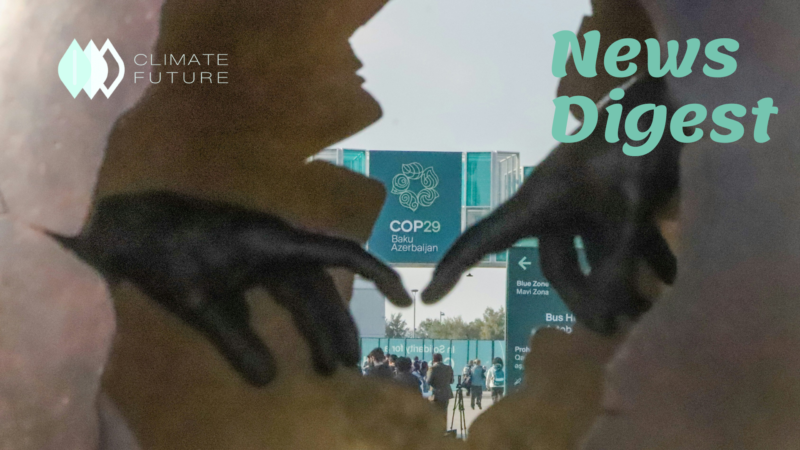2022 Year in Review: Amid global turmoil, UN doggedly pursues international climate agreements
When the UN climate conference (COP26) wrapped up in Glasgow at the end of 2021, none of those present could have suspected that the Ukraine war would throw the global economy into turmoil. At the same time, a host of studies pointed to the continued global warming and the failure of humanity to reduce carbon emissions. Although the UN continued to lead on the slow, but essential task of achieving international climate agreements, while putting sustained pressure on major economies to make greater efforts to cut fossil fuel use and support developing countries. Whilst some regions were hit by catastrophic floods, others suffered from a lack of water. Fossil fuel power plants are one of the biggest emitters of greenhouse gasses. At the Ocean Conference, world leaders admitted to deep alarm at the global emergency facing the Ocean and revised their commitment to take urgent actions at all levels to achieve targets as fast as possible. Science-based and innovative actions together with international cooperation are crucial to provide necessary solutions. The world’s biodiversity is at a perilous state while around one million species are endangered.
WMO releases ‘tell-tale signs’ of extreme weather conditions around the world
The UN weather agency said it is important to prioritize cutting greenhouse gas emissions which was again underscored throughout events in 2022. It has been advocating to strengthen climate change adaptation with universal access to early warnings. According to the WMO, 2022 global temperature figures will be released in mid-January while the past eight years are the eight warmest on record. 2023 is the year that the WMO celebrates its 150th anniversary. This year WMO will give priority on early warnings, building resilience to extreme weather and increasing investment in the global observing system. It will promote a new way of monitoring sources of carbon dioxide, nitrous oxide and methane by using the ground-based Global Atmosphere Watch which provides better understanding of how major greenhouse gasses perform in the atmosphere. Greenhouse gas is one of the climate indicators used to observe levels. Although 2022 did not break global temperature records, it reached many national heat records throughout the world.
Climate action, one recipe at a time
Cookbook in Support of the United Nations: For People and Planet which includes over 70 recipes was launched recently. The book was created in collaboration with the UN Food and Agriculture Organization (FAO) in consultation with other UN affiliated organizations such as UNEP, UNESCO, UN Climate Change and the UN Department of Global Communications. The cookbook aims to encourage the people to use it as a source for education and inspiration. For People and Planet is divided into chapters which include biodiversity, food systems, climate, sustainable consumption and production, as well as food waste by providing recipes. It also gives insights into the carbon footprint of each dish. It also follows and highlights and follows the UN World Health Organization’s macronutrient guidelines by making recipes for both planet and humans. It puts a spotlight on the importance of our food choices and how they can impact our immediate environment. The book features 75 recipes together with instructions for preparation and reflection stories from indigenous communities and farmers who are the root source of the world food’s production chain. The book’s contributors were brought together by Kitchen Connection which provides an online platform for education and cooking classes.
As biodiversity degrades, nature’s solutions are lost forever
When a species goes extinct, it takes with it all of the chemical, physical, biological and behavioral attributes that have been chosen for that species, after having been tested in countless evolutionary experiments more than thousands and millions of years of evolution. These include designs for cooling, heating and ventilation for being able to move most efficiently and effectively through water or air for storing and producing energy, for making lightest, strongest most recyclable and biodegradable materials and for many other functions essential for life. The loss of biodiversity and nature represents major losses to human potential and not limited to human applications. Professor Akira Obata designed corrugated blades for micro-wind turbines which generate electricity at wind speeds as low as 3 kph. Some birds, butterflies and spiders have evolved super black coloration received by a variety of complicated light-trapping mechanisms which could lead to new energy-efficient designs for solar collection. WHO estimates that by 2025, half the world’s population will be living in water-stressed environments. The organisms create the support systems for all life on Earth, including human life. Since millions of species are at risk, losing even a single species can have huge negative consequences for humanity.



